
| Lotus Symbol | 
|
|
Ancient Egyptian Gods and Goddesses for kids - The Lotus Symbol The history of ancient Egypt and the significance of the Lotus Symbol |
|
The Lotus Symbol - The Water Lily
Discover the history and religious beliefs surrounding the Lotus Symbol which was one of the most important religious Egyptian Symbols in the mythology of ancient Egypt. The Lotus is used as a symbol in ancient Egyptian art representing the sun, of creation, rebirth and was a symbol of Upper Egypt. As a symbol of the sun it is closely associated with Atum-Ra, the Sun god and later with Nefertum, lotus god of perfume. Lotus flowers, also called water lilies, open in the morning and close again at night symbolizing rebirth and regeneration. The lotus flower, water lily, was also used to symbolize the deceased upon entering the underworld and the process of rebirth, regeneration and reincarnation. |
|
Facts about the ancient Egyptian Lotus
The Lotus Symbol was a potent ancient Egyptian symbol and icon in the mythology and legends of Egypt and often depicted in ancient Egyptian art. According to ancient Egyptian mythology the Lotus symbolized the sun, of creation, rebirth and regeneration. Nefertem was the god of healing, medicine and beauty and strongly associated with the lotus and often depicted in Egyptian art with a large lotus blossom forming his crown as seen in the picture
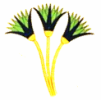
| The Lotus Fact File | | Name: | The Lotus is also referred to as the water lily. The ancient Egyptian Lotus flower symbol was called 'Sesen' in the Egyptian language.
| | Egypt: | The Lotus Symbol, or motif, is found in honored places throughout Egypt. On the architecture, especially on the capitals (tops) of Egyptian pillars, in the tomb Hieroglyphics, papyrus, on thrones, headdresses of the divine pharaohs
| | Significance: | The Lotus flower is connected with the creation myth as the lotus came from of original silt (mud deposit) before time. The creator was born from the cup-shaped chalice of the lotus flower. The Lotus Symbol symbolized the sun, of creation, rebirth, regeneration & represented Upper Egypt
| | Description: | It grows in muddy swamps. The flower extends out of the water and blossoms into fifteen white or pink oval shaped spreading petals. At its center is a curious flat seedcase. It is both ornamental and sweet smelling
| | Usage: | Many perfumes, cosmetics, unguents, air-fresheners, medicines and lotions contained oil extracted from lotus flowers. |
|
|
Picture featuring the Lotus Symbol in Egyptian Art
The picture below depicts lotus plants held by a pharaoh (indicted by the Deshret Red Crown, the symbol that represented Lower Egypt (the North of Egypt). He stands in front of the ibis headed god Thoth who was the secretary of the sun god Ra and scribe of the Underworld who inscribed the name of the Pharoah on the Tree of Life. Thoth hold two potent symbols of ancient Egypt: the Ankh and the Was Scepter. Hathor, the cow goddess of magic, fertility and healing, identified by her crown set in cow horns surrounding the sun disk, stands behind Thoth. The blue lotus was her sacred flower, representing her powers of healing and regeneration. 
Facts about the Lotus in Egyptian Mythology and History
Discover interesting information and research facts about the Lotus Symbol, the potent Egyptian symbol. The facts about the Lotus Symbol provides a list detailing fascinating additional info to increase your knowledge about the Lotus Symbol in Egyptian Mythology and history. Two species of lotus were native to ancient Egypt: - The white lotus (Nymphaea lotus)
- The blue lotus (Nymphaea cerulea)
The pink lotus (Nelumbo nucifera) was introduced to Egypt from Persia (modern Iran) during the Late period. The lotus was the only flowering plant in Egypt that bloomed continuously throughout the year Facts about the Lotus Symbol from Mythology and Egyptian History |
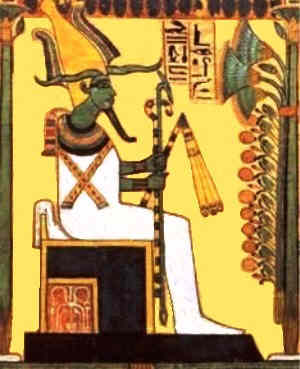
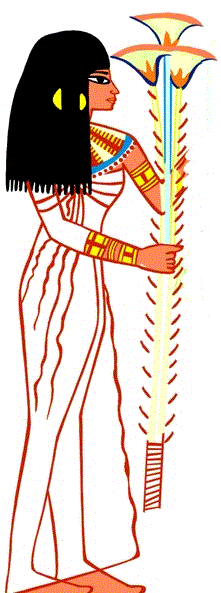
|
Fact 1: |
The lotus symbol was closely related to funeral imagery and the cult of Osiris. The Four Sons of Horus were frequently shown standing on a lotus in front of Osiris
| | Fact 2: | Nefertem, the son of Ptah and a god of Memphis was called the “Perfume Lord”. Nefertem was believed to be the first incarnation of Atum at Heliopolis, later referred to as Atum-Ra and then Ra. Nefertem was the god of healing, medicine and beauty and often depicted in Egyptian art with a large lotus blossom forming his crown, or as a small child crouched on a lotus flower symbol.
| | Fact 3: | The sacred blue lotus was the flower most commonly depicted in Ancient Egyptian art symbols. The lotus symbol or motif adorned the capitals of pillars representing the Tree of Life.
| | Fact 4: | The blue lotus was preferred to the white flower due to its exquisite smell.
| | Fact 5: | The Ancient Egyptians believed that scent had a divine origin and it was used in rituals, ceremonies, cosmetics, medicine and scented ointments.
| | Fact 6: | Many scenes depicted images of the lotus symbol being held by gods and goddesses towards the nose of royal kings, queens and pharaohs as its scent was considered restorative and protective.
| | Fact 7: | The Egyptian Lotus is taken as a symbol of Upper Egypt but also has strong ties to Heliopolis in Lower Egypt
| | Fact 8: | In temples the statues of the Egyptian gods and goddesses were bathed in water that was scented with the lotus flower
| | Fact 9: | The goddess Hathor was also depicted holding the blue lotus symbol as her sacred flower.
| | Fact 10: | The ancient Egyptians are believed to have used the lotus to induce an ecstatic state, for stimulation, cleansing, healing properties and as an aphrodisiac
| | Fact 11: | The lotus flower (a symbol of Upper Egypt) was also commonly used in Egyptian art with its long stems intertwined with papyrus reeds (a symbol of Lower Egypt and the Nile God Hapi) as a representation of the unification of the two lands.
| Facts about the Lotus Symbol from Mythology and Egyptian History | 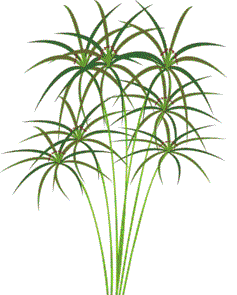 | 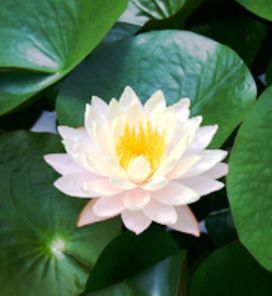 | | Picture of Papyrus Reed | Picture of Lotus Flower |
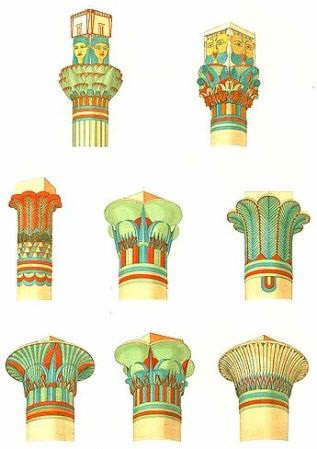 Pictures of the Lotus decorating the capitals of Egyptian Pillars |
|
|
Bennu- Interesting research information and Facts about the ancient Egyptian Lotus Symbol
- The sacred flower symbol of the ancient Egyptians
- Egyptian Mythology associated with the Lotus-flower (water lily) symbol
- Facts and information about the Gods and Symbols of the Ancient World for schools, research and kids
- Pictures, Description and fact sheet of the water lily symbol for kids
|
| | |
|
The Lotus - Offerings to to the gods
The following picture shows a temple scene in which a cat goddess is being worshipped. The lotus flower, features strongly in the picture, as does the incense burner. Incense offerings were made on a daily basis and scent played such an important part in temples, daily life and magical rituals. Only priests, priestesses and royalty were allowed inside temples. Ordinary Egyptians worshipped and made offerings at small shrines in their homes. A statue of the god was placed on the altar table and ancient Egyptians prayed and gave offerings to the god whilst kneeling on a reed mat. 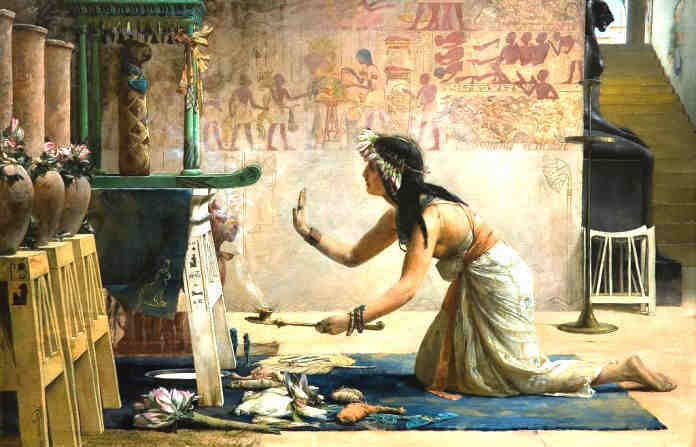
Picture of the Gods and the Lotus Symbol
The picture below features the Lotus Symbol depicted in a scene from the Book of the Dead showing various Egyptian gods and goddesses and other ancient Egyptian symbols. - The winged goddess is an image of Isis, indicated by her 'throne style' crown
- The All-seeing eye of Horus or Ra
- Osiris, the god of the dead with his green skin and the Atef crown
- The solar deity Ra Atum, depicted with the head of a hawk with a solar disk on top
- The Lotus flower symbol
- Ammit, the "Devouress of the Dead" who attended the Judging of the Dead and devoured those deemed to be sinners. Ammut was depicted as having the head of a crocodile, the torso of a lioness and the hindquarters of a hippopotamus
- The ibis headed god Thoth who was the secretary of the sun god Ra and scribe of the Underworld
|
|
|
|
|